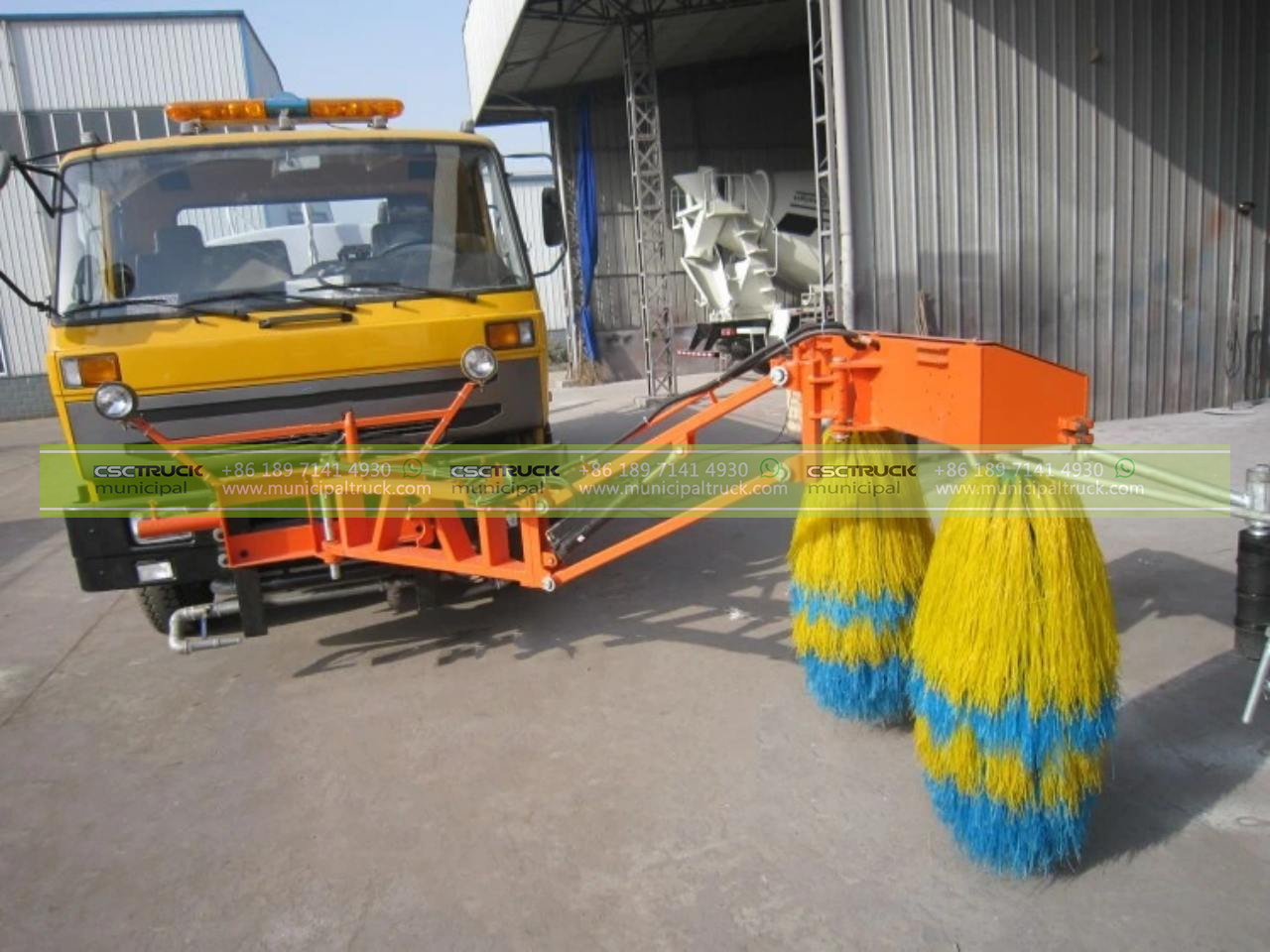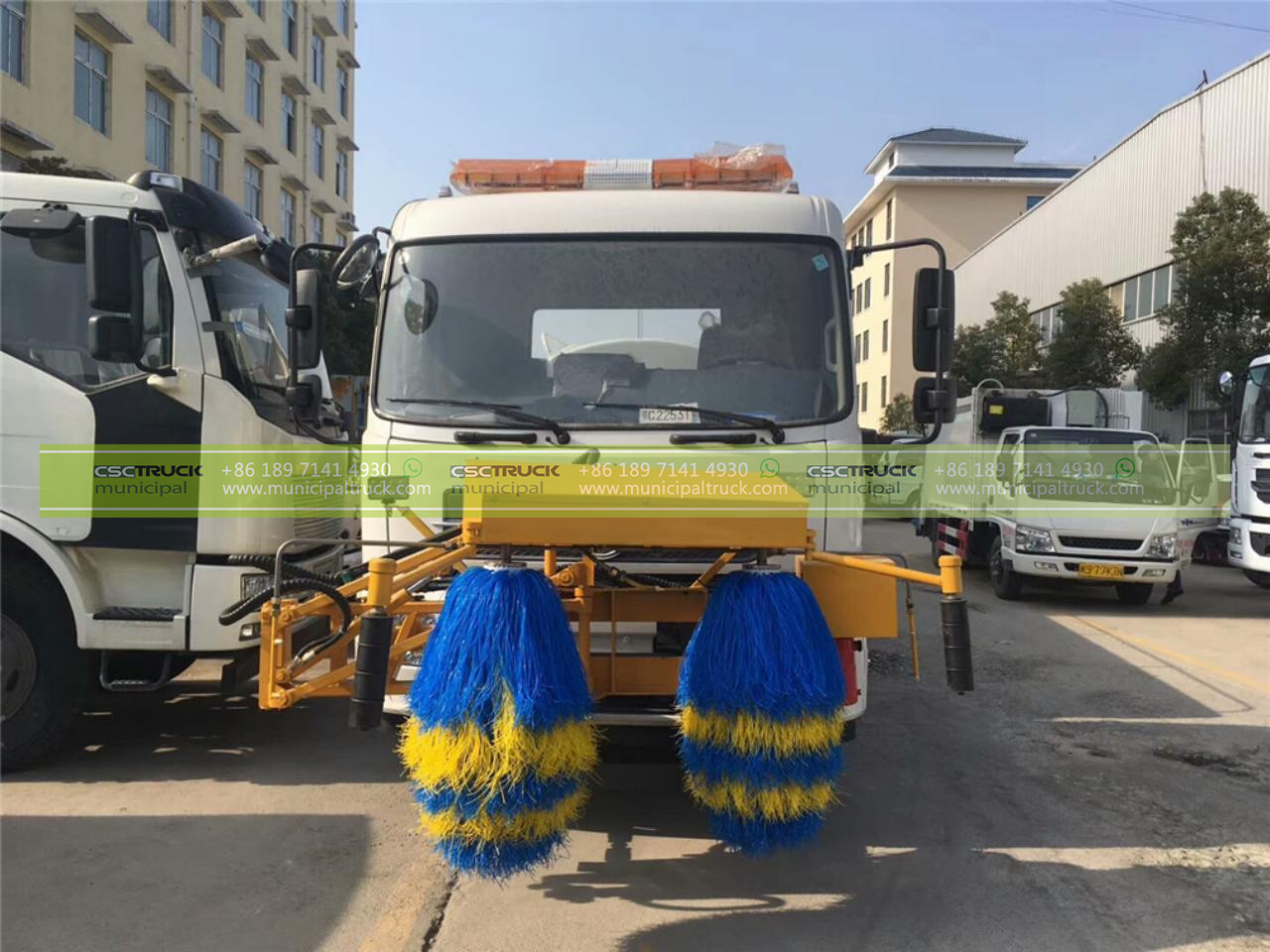Maintaining the cleanliness of public spaces is an essential task for municipalities and organizations striving to create pleasant and safe environments. One often overlooked yet crucial aspect of urban cleanliness is the upkeep of fence sweeper trucks. These specialized vehicles play a significant role in keeping streets, sidewalks, and open areas free from debris and litter. In this guide, we will delve into the importance of fence sweeper trucks, the key elements of their upkeep, and strategies for efficient cleaning to ensure the optimal performance of these indispensable machines.
The Role of Fence Sweeper Trucks
Fence sweeper trucks are designed to efficiently remove litter, dirt, leaves, and other debris from urban environments. Equipped with high-powered brushes and suction systems, these vehicles can quickly sweep large areas, including sidewalks, parking lots, and streets, ensuring a clean and visually appealing landscape for residents and visitors alike. By eliminating debris that accumulates in public spaces, these machines contribute to better air and water quality, reduced pest attraction, and a lower risk of slips and falls due to debris-covered surfaces.
The Importance of Upkeep
Effective maintenance of fence sweeper trucks is vital to their performance and longevity. Neglecting regular maintenance can lead to breakdowns, decreased cleaning efficiency, and higher operational costs. It is essential to recognize that fence sweeper trucks operate in demanding conditions, facing constant exposure to dust, debris, and moisture. Without proper upkeep, components such as brushes, suction systems, filters, and hydraulic systems can deteriorate, leading to subpar cleaning results and more frequent repairs.

Key Elements of Upkeep
1. Regular Inspection: Schedule routine inspections to identify wear and tear on various components. Check the condition of brushes, filters, belts, and hydraulic systems. Addressing minor issues promptly can prevent them from escalating into major problems.
2. Maintenance Checklist: Develop a comprehensive maintenance checklist that covers all aspects of the fence sweeper truck, from mechanical components to electronic systems. This checklist should outline tasks such as lubrication, filter replacement, and hydraulic fluid checks.
3. Fluid Management: Maintain proper levels of hydraulic fluids, coolant, and oil. Clean and replace fluids at recommended intervals to ensure optimal performance and prevent overheating or system failure.
4. Brush Replacement: The brushes on a fence sweeper truck are critical for effective cleaning. Regularly inspect the condition of the brushes and replace them when they show signs of wear, such as reduced bristle length or fraying.
5. Filter Cleaning and Replacement: Clean or replace filters regularly to ensure proper air circulation and suction efficiency. Clogged filters can strain the engine and reduce overall performance.
6. Electrical Systems: Test and inspect the electrical systems, including lights, sensors, and control panels. Faulty electrical components can impact the operation of the sweeper truck and compromise safety.
7. Tire Maintenance: Adequate tire pressure is essential for maneuverability and efficient operation. Check tire pressure regularly and replace worn-out tires to ensure stability and safety.
Strategies for Efficient Cleaning
1. Route Planning: Develop well-organized cleaning routes to minimize overlap and maximize coverage. Efficient route planning reduces fuel consumption and wear on the vehicle.
2. Scheduled Cleaning: Establish a regular cleaning schedule based on the specific needs of the area. High-traffic zones might require more frequent cleaning, while less-trafficked areas can be cleaned less often.
3. Weather Considerations: Adapt cleaning schedules based on weather conditions. Rain or wind can scatter debris, requiring more frequent cleaning during such periods.
4. Collaborative Efforts: Coordinate with other municipal services to optimize cleaning efforts. For instance, street sweeping can be synchronized with garbage collection to minimize disruptions.
5. Public Awareness: Educate residents and businesses about the importance of keeping public spaces clean. Encourage responsible disposal of trash and discourage littering.

Adapting to Technological Advances
As technology continues to advance, the field of fence sweeper trucks is not exempt from innovation. Manufacturers are integrating cutting-edge features that enhance both cleaning efficiency and environmental sustainability. Some notable technological advancements include:
1. Smart Sensors: Modern fence sweeper trucks are equipped with smart sensors that can detect the presence of debris, adjust brush pressure based on surface type, and optimize suction power. This not only improves cleaning effectiveness but also reduces unnecessary wear on components.
2. Telematics and GPS: Telematics systems provide real-time data on the performance and location of the sweeper truck. This data can be used to monitor routes, track fuel consumption, and optimize cleaning schedules, resulting in more cost-effective operations.
3. Eco-Friendly Options: Many municipalities are transitioning to eco-friendly cleaning practices. Manufacturers are responding by developing sweeper trucks powered by alternative fuels, such as compressed natural gas or electric batteries. These options not only reduce emissions but also contribute to quieter and more sustainable urban environments.
4. Remote Monitoring and Diagnostics: Remote monitoring technology enables maintenance teams to diagnose issues and perform updates remotely. This can lead to faster response times, reduced downtime, and more efficient maintenance practices.
5. Data-Driven Insights: Analyzing data collected from fence sweeper trucks can provide valuable insights into cleaning patterns, frequency of debris accumulation, and areas that require extra attention. These insights can inform decision-making and help refine cleaning strategies.
Building a Sustainable Future
In an era where environmental consciousness is paramount, fence sweeper trucks have a role to play in promoting sustainability. By embracing eco-friendly technologies, municipalities can reduce their carbon footprint while maintaining cleaner public spaces. Additionally, proper upkeep and maintenance can extend the lifespan of these machines, minimizing waste and contributing to a more sustainable approach to urban cleanliness.
Furthermore, public education remains a critical component of sustainable cleanliness efforts. Encouraging residents and businesses to take pride in their surroundings and dispose of waste responsibly can lead to a cleaner environment overall. This collective effort can reduce the workload on fence sweeper trucks and contribute to the long-term success of urban cleanliness initiatives.

Conclusion
Fence sweeper trucks stand as silent guardians of urban cleanliness, ensuring that our streets, sidewalks, and public spaces remain free from debris and litter. Their efficient operation depends on diligent upkeep and the implementation of innovative cleaning strategies. Regular maintenance, careful route planning, and adapting to technological advances are all vital to maintaining the performance and longevity of these indispensable machines.
As cities and municipalities continue to grow, the importance of efficient and sustainable cleanliness practices becomes more evident. By investing in the maintenance of fence sweeper trucks and adopting eco-friendly technologies, communities can create cleaner, more attractive environments that enhance the quality of life for residents and visitors alike. Ultimately, the proper care and efficient operation of fence sweeper trucks contribute to a brighter, healthier, and more sustainable urban future.
Contact us for this municipal truck or similar trucks: [email protected] Call us or What's APP us: +86 189 4292 3930







